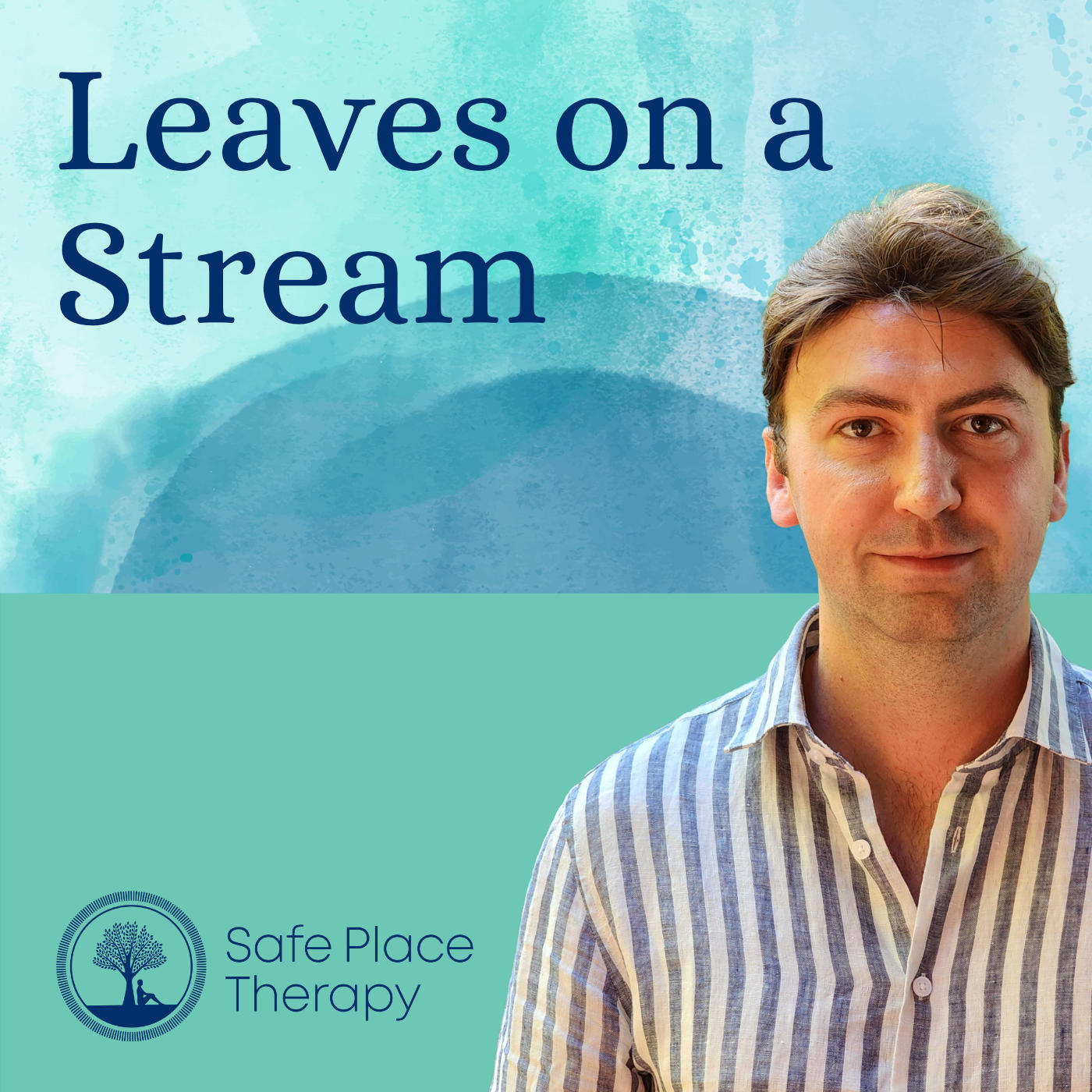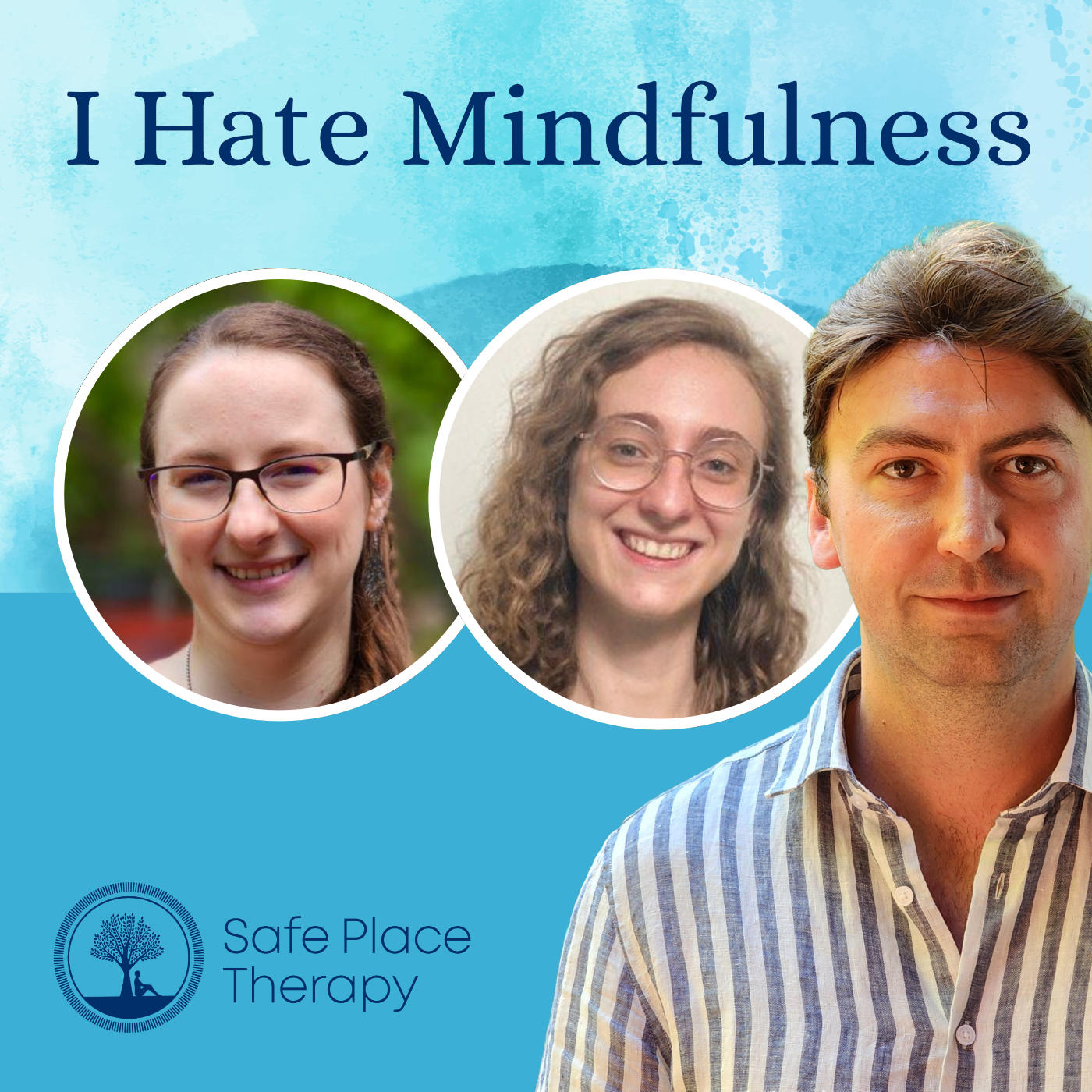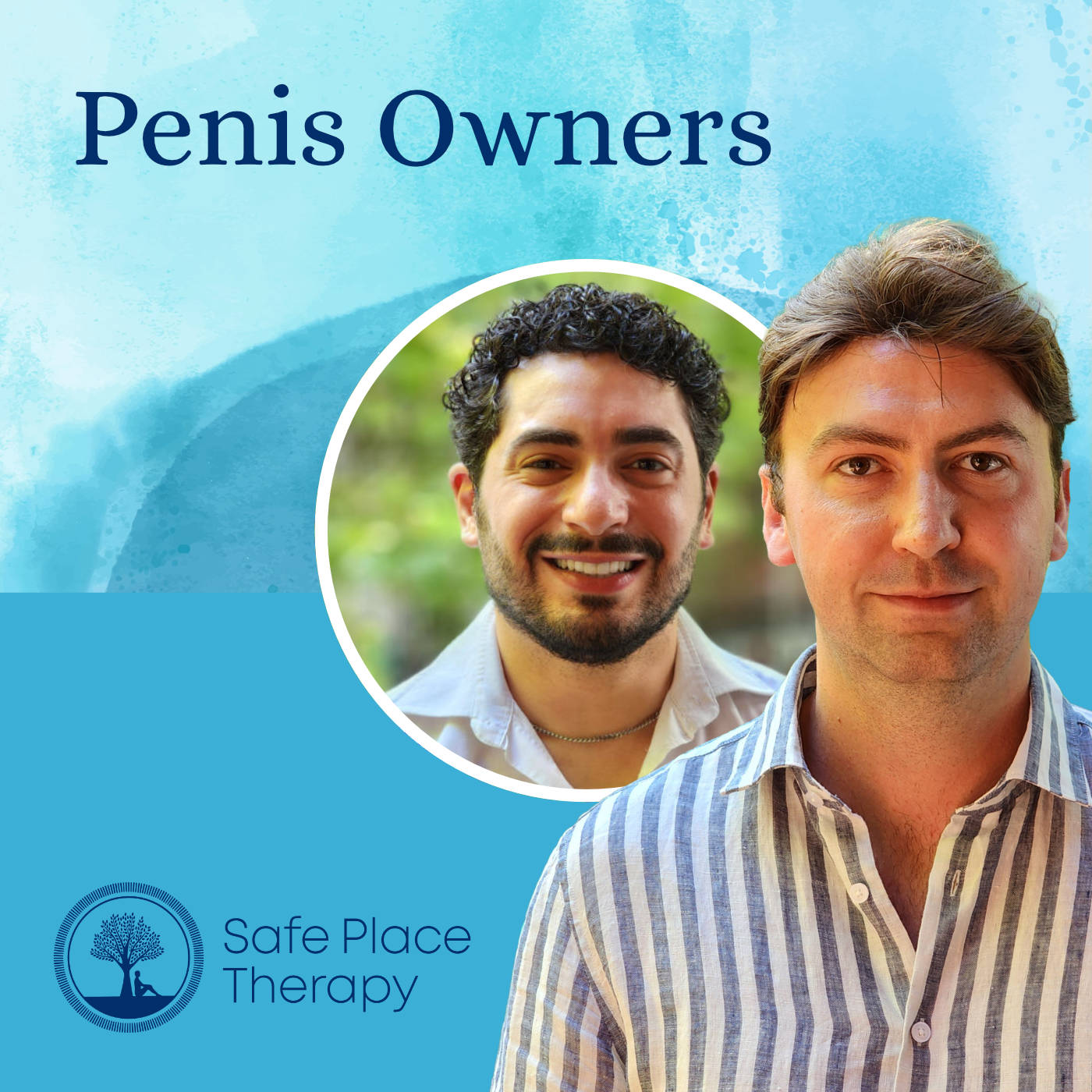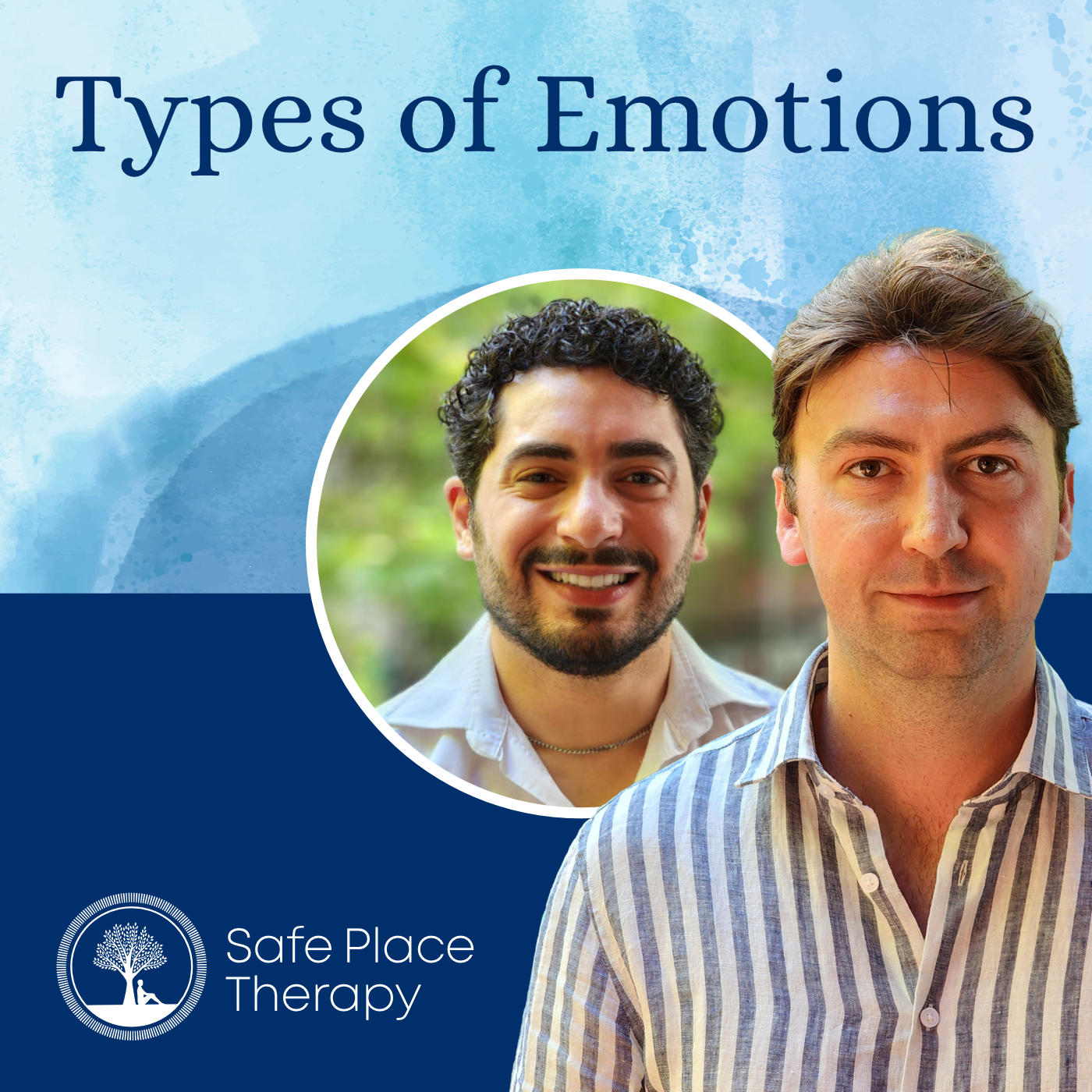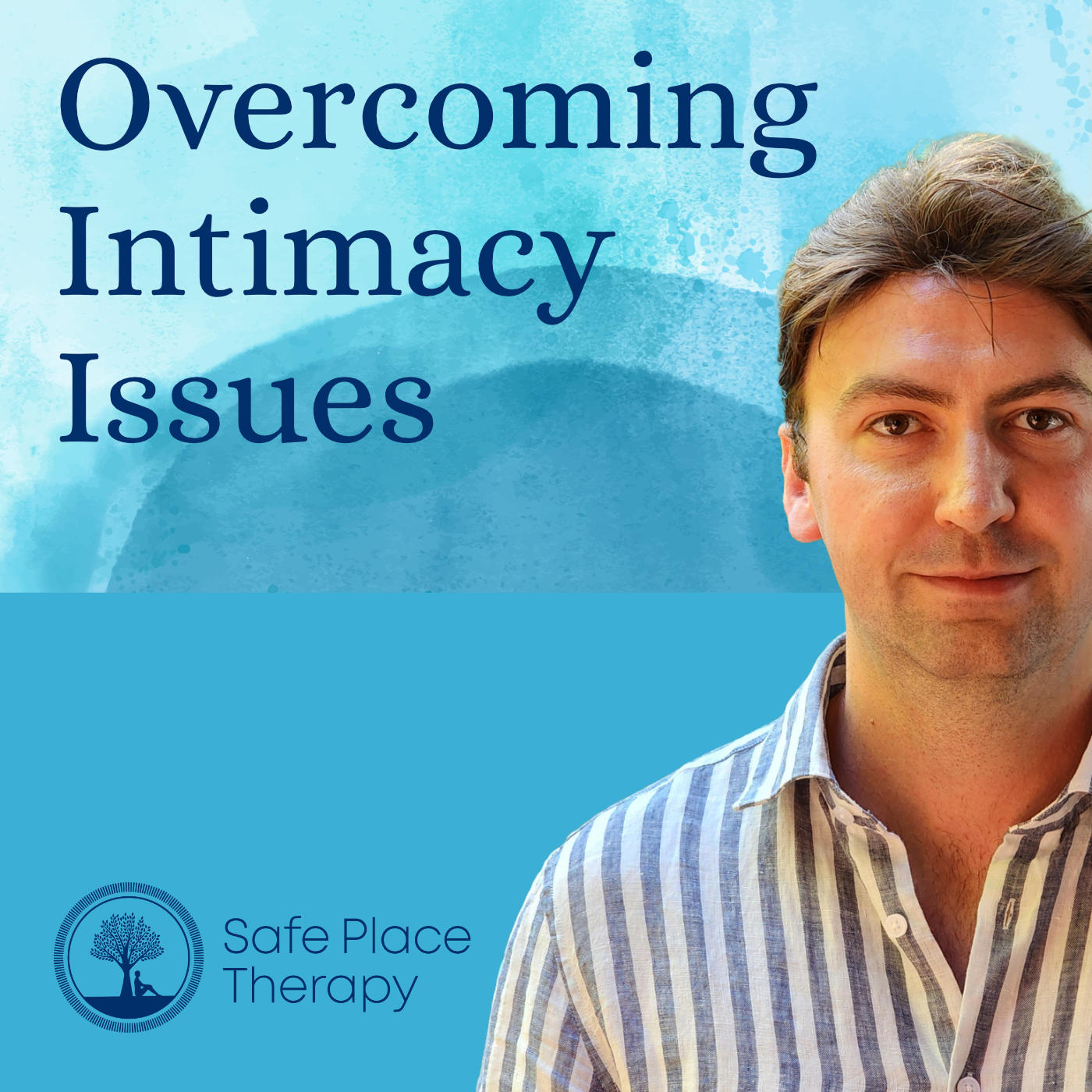Episode Transcript
[00:00:00] Foreign.
[00:00:07] Today, we're going to be walking through a tool that many people might know about. But this leaves on the stream tool is actually kind of an updated version that I have tweaked for neurodiverse people, people that have really busy brains, but also adding some more elements onto that to individualize, so it might work with you better. But also add on a few other steps, too. So if you've done that leaves on a stream exercise before and you're a bit of a pro at it, try this tool. It might be just adding onto your toolbox. My name is Stuart Shepton. I'm a mental health social worker and one of the owners of Safe Place Therapy. And today we're recording on the lens of the Kula Nation.
[00:00:59] So a few basic concepts. First, let's kind of just tune in with our bodies right now. 0 is we're completely calm and zen. Like 10 out of 10 is we're super, super busy or panicked. If you're at a 10, it might not be a great idea to do to try this tool. If you're at a seven or six, that's great.
[00:01:24] If you're at a higher number, it might be good to do some practical things like having a hot shower or sipping a cup first to slow that number down a little bit. And then we can go ahead and try this.
[00:01:37] Okay, cool. So the first thing that we should do is get a little bit more into our bodies, and we can make that a unique process. So that could be wiggling your toes, noticing how big that feels in your shoes. It could be pushing your hands together really tight for 10 seconds and then releasing.
[00:01:58] It could be lifting up your shoulders and tension that up and then relaxing. Just some kind of little bodily movements to help us feel a bit less in our head and feeling a little bit more in our body. That's called grounding.
[00:02:14] Okay, now if you feel comfortable, I want you to go ahead and close your eyes. And if that's uncomfortable, you can kind of stare a little bit more on the ground, or you can even just kind of pick a spot and stare at it. That's. That's perfectly fine.
[00:02:31] With kind of closed or half closed eyes. I want you to imagine yourself standing by a body of water that's moving. So it could be a river, it could be a creek or a little stream. Just kind of any body of water that's kind of moving in one direction. Yeah, but make that spot yours. If you need a lot of stimulation, if you need a lot of things that keeps your brain interested you could be by a forest with some animals. You could have your favorite pet with you. You could even have a loved one right next to you. That's completely fine. You can even have some music playing at the same time. That's perfectly okay. So we're imagining picturing this spot with this body of water kind of flowing past.
[00:03:22] And as you're noticing this water kind of flow past, I want you to put a leaf in the water with every thought that comes to your mind.
[00:03:34] So it could be a positive thought about finishing a job at work. It could be a negative thought, like all the stresses that you have, or a neutral thought, just something mundane.
[00:03:46] So just every thought that you have, place it on the leaf and let it float by thinking about the busyness of your brain, thinking about what you need to cook for dinner, any thought that comes by.
[00:04:05] Now, if you notice that your brain is kind of jumpy and jumping all over the place, maybe add a little bit more stimulation here. Right? So decide what the weather is like. You could even, you know, put a swing next to the river and swing on the swing while you're doing this. Right. So just build up the creativity if you need to.
[00:04:29] We're just noticing those thoughts float past us and just giving it some time.
[00:04:38] So that's step one, and that's the normal kind of leaves on the string process.
[00:04:43] Next, what I want to do, kind of level two here is I want us to step away from that body of water. So we're taking 10 steps back.
[00:04:52] And now I want you to imagine that you have a backpack, and the backpack represents the kind of stresses or the things that you carry around. Right. But we want to prioritize them. We want to kind of shift a little bit the intensity of those stresses. So now what I want you to do is put your backpack down on the ground, and I want you to pick out the rocks that represent your stresses.
[00:05:18] So an example of mine might be doing this episode and thinking about all the components of it. And for me, that's kind of a pebble size. It's not particularly big, it's not particularly heavy, but I'm actually going to hang on to that pebble because I'm doing that episode right now, so I'm focusing on that task. Another rock might be the size of a basketball, and that's planning my schedule a week and all the different things I need to get done. So that's pretty heavy size of a basketball. I'm actually going to push that away because the weekend's coming up, so I Actually want a bit of distance from that. So I'm pushing that basketball size rock a few steps away, so it's away from me. Yeah. So go ahead, pick out the different rocks in your life, this current stresses you have, and make a decision on the heaviness of it. How would you describe it? This, the shape, the size, but also what you want to do with it in the next hour for the rest of your day. Do we want to push it away? Do we actually need that for our mental health to slow down, or is there some tangible things we want to do about it? So we keep it nice and close.
[00:06:34] So just spend some time picking out those different rocks, prioritizing what you want to do or what you feel you need to do based on your stress levels.
[00:06:50] So step one was we've got our thoughts kind of flowing past us.
[00:06:57] Step two is now we're prioritizing the tasks and the stresses that we have in our life and kind of making some choices around that.
[00:07:07] And now step three is I actually want us to leave all the rocks where they are, even leave our backpack full of stresses. And I'm sure that there's a few. And I actually want us to take another 10 steps back.
[00:07:24] And I want you to kind of set up like a little picnic area. So it could be a nice little tree, or you can have a hammock or a camper chair, or even, you know, a TV space where you're watching something you like.
[00:07:40] But now we're separate from our thoughts. Buzzing and floating by. We're separate from our stresses and the things that we carry around.
[00:07:50] And now we're just taking some time for us, and now's an opportunity to actually just check in on how we feel. So now let's do a bit of a body scan. So from the top of our head, down through our neck, down through our shoulders, our chest, our tummy, the rest of the body, and just notice how do we feel, what's kind of bubbling up, what do we notice?
[00:08:25] If this has caused a bit of a bubble that's really big, you can stop this exercise straight away. That's okay. And go do something.
[00:08:34] If you need to build a bit more safety, that zone, or have a little bit more stimulus again, that's okay, make it yours.
[00:08:43] But just by carving out this kind of safe zone and allowing our brain to settle from our thoughts, settle from our stresses, and have a separate space for us emotionally, that's pretty important.
[00:09:03] And now this is a process that we can do to do that. Check in, do a Kind of softer landing.
[00:09:14] So just take a minute. You don't have to be here long.
[00:09:19] And you can add or take away whatever you need. That's building safety for you, but also allowing the to do that emotional check in.
[00:09:33] When you're ready, I want you to come back to your body slowly so you can wiggle your toes again. You can push your arms tightly cluster each other.
[00:09:45] You can kind of do some shoulder shrugs if you need to, or kind of blink your eyes intentionally and then slowly kind of come back to the room.
[00:09:58] Just notice what's around you.
[00:10:06] So I hope this is something that you can go away and practice. Please make it yours. If you need different stimulus, if you need different ideas to help you get into that zone, and you can even have external music playing, you can have a nice smelly candle. Whatever you need. Need to kind of shift your brain a little bit to slow that intensity down.
[00:10:34] Now this can be used for lots of different people, people that are highly stressed, people that have a lot of emotions going on, or if you just generally have a lot of tasks and stresses that you're doing, you need to prioritize those tasks.
[00:10:53] If you like this tool, please like, please subscribe to our YouTube channel or Spotify or if you're listening and please share it. We want to get this message out there. We really want to create tools and deliver to the community different options to help people's mental health build awareness and just start the conversation.
[00:11:17] So please share with a loved one and please reach out if you need to. We continue to try to be your safe place to talk. Bye for now.
